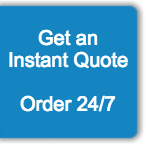10 Resume Writing Tips You Need to Know
According to Forbes, 40% of human resources managers spend less than a minute reviewing job applications, and 20% spend less than half a minute. While those numbers aren’t very encouraging, the good news is that you can easily take steps to make your resume stand out from the rest.
You have your own brand of talents and skills. Matching those skills with the right employer is not rocket science—yet, there is some science involved, along with a dash of art. After you’ve read the following resume writing tips, look critically at your present resume and upgrade it as needed. Extra assistance never hurts either. With our job success package, we can help you write a new resume, improve an existing one, and create a custom cover letter.
These resume writing tips cover the basics of a good resume that will get noticed. If 60 people apply to the same job, up to half of them may not have taken all the right steps to create a quality resume.
1. Choose the resume format that’s right for you.
Depending on your career field, experience, education, and other factors, you’ll want to select the resume format that’s right for you. Most resumes are chronological, but there are also functional, targeted, or combination styles. Chronological resumes are best for people with a solid employment history with no major gaps. Functional resumes focus on your skills, and so they’re good if you have gaps in your employment history.
2. Select a suitable font style and use it consistently.
As you create and format your resume, choose one font style that’s easy to read. Good sans serif options are Calibri and Arial. Suitable serif styles are Garamond and Times New Roman. The latter has traditionally been one of the most popular fonts for a variety of written materials. Font size should be 11 or 12 points, depending on the length of your resume. Use your best judgment.
3. Include a personal profile.
A great resume tip is to lead off your resume with a personal profile, which is a brief summary of your qualifications and skills as they relate to the job you’re applying for. When done well, a personal profile can pique the interest of the HR representative or recruiter and encourage them to spend more time reviewing your resume.
4. Customize your resume for every application.
As we alluded to in the previous resume writing tip, you’ll want to customize your resume for each job application. You don’t have to rewrite it completely, but do tailor your personal profile to the job. Look at the job description and highlight the skills and qualifications that best match the job requirements.
5. Look at current examples and templates.
We’re not suggesting that you copy someone else’s resume, but finding relevant examples will give you a starting place for your format. Templates are also a good way to start building your resume. Microsoft Word, for example, has several styles in its template folder.
6. Highlight your job descriptions and accomplishments.
You’ve heard that sizzle sells. The same goes for your resume—not that you have to resort to gaudy bells and whistles to make your job history stand out. But do use a little color to make your accomplishments stand out. Just don’t resort to large type or ALL CAPS throughout the body of your resume.
7. Make your career goals as clear as possible.
This resume tip may seem obvious, but make sure your career goals stand out. If your resume lacks focus or is ambiguous, a recruiter or HR staffer will likely think the same about you. In your objective statement, consider your vision for the next one to ten years and what values are driving your goals. Think about what you are passionate about, what motivates you, and why you went into your particular field in the first place. The more focused you are in your profession, the more attractive you’ll be to an employer in your field.
8. Include keywords to help you rise to the surface.
Review the job description and list the most prominent words. Include these keywords in your customized resume and cover letter. More companies these days use an applicant-tracking system that searches for keywords in your resume and cover letter to screen out applications without the right number and type of keywords. For example, if the job description specifies experience with “IT management systems” and you have that experience, be sure to include the phrase “IT management systems” in your resume.
9. Edit and proofread—and then do it again.
We can’t emphasize this resume tip enough. You may be smart and talented, but if your resume contains typographical and/or grammatical errors, you won’t make the first cut. And don’t rely on Word’s spelling and grammar tool to catch everything. Always get someone else review to your work, even if you have to spend a few bucks to hire a professional editor.
10. Take care with the little details, like contact information.
Always include your full name, mailing address, phone number, and email address in your resume. You can also include links to your LinkedIn profile, website, portfolio, or other online profiles relevant to your application. When emailing your resume, carefully follow the company’s instructions for sending the application.
We hope these resume writing tips help get you started—and motivated—to craft the best possible resume for your career aspirations. If you’re confident in what you offer as an employee but feel uncertain about your resume, get professional resume writing services. A small investment today can pay large benefits in the future.


